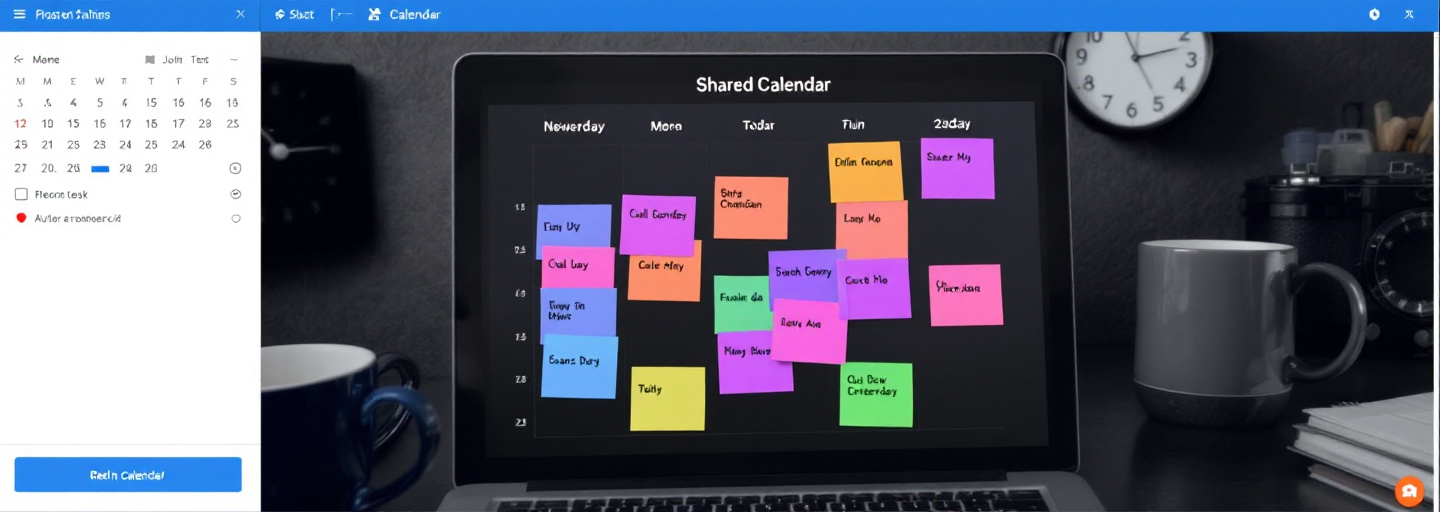Mastering Time Zones for Global Meetings
« Back to all blog postsLearn how to schedule global meetings easily using time zone calculators, alarms, and smart tips for managing international teams.
When a New York team member logs in for a 9 AM meeting, their colleague in Sydney is already preparing for tomorrow’s breakfast.
This 14-hour gap represents just one of countless time differences that complicate global collaboration every day.
As remote work connects professionals across continents, mastering time zones has become an essential skill rather than just a travel consideration.
Why Time Zones Complicate Global Meetings
Time zone coordination creates three distinct challenges that even experienced teams struggle with regularly. First, there’s the mathematical complexity of calculating multiple time zones simultaneously. When coordinating between San Francisco, London, and Singapore, you’re not just adding or subtracting hours—you’re navigating a complex web of offsets that change throughout the year.
Second, daylight saving time transitions create temporary confusion windows. The United States, Europe, and Australia all shift their clocks on different dates, creating weeks where usual time differences temporarily change by an hour. A meeting that worked perfectly last week might suddenly fall outside working hours.
Third, as team distribution widens, the overlap of standard working hours shrinks dramatically. A team spanning San Francisco to Singapore has just a narrow 2-3 hour window when everyone might reasonably be working. This forces difficult choices about which team members must accommodate odd hours.
Remote work growth since 2020 has amplified these challenges. Companies that once managed occasional international calls now coordinate daily across continents. Without proper tools, someone inevitably joins bleary-eyed at 3 AM or misses the meeting entirely due to conversion errors.
How Time Zone Calculators Help You Stay Aligned
A time zone calculator shows the current time across multiple locations simultaneously, eliminating the mental math that leads to scheduling errors. Rather than counting hours forward and backward, you can see at a glance that it’s 2 PM in London, 9 AM in New York, and 10 PM in Singapore.
These tools prove especially valuable when dealing with locations that have unusual time zone offsets. India operates at UTC+5:30, Nepal at UTC+5:45, and parts of Australia at UTC+8:45—increments that defy simple hour-based calculations and create frequent errors when scheduled manually.
Modern time zone calculators offer several practical advantages:
- Instant comparison of multiple locations on a single screen
- Visual representation of overlapping working hours to find meeting windows
- Automatic adjustment for daylight saving time changes without manual tracking
To use these tools effectively, start by entering all team locations into the calculator. For instance, you can instantly check the current time in Mexico City alongside other team locations to find suitable meeting windows. Look for the colored overlap that shows when most team members are within working hours, then select a time that minimizes inconvenience for those in outlying zones.
Compared to manual calculations, these tools save significant time and virtually eliminate conversion errors. A process that once required multiple calculations and double-checks now takes seconds, freeing you to focus on the meeting content rather than its timing.
Using Alarms to Manage Time Zone Differences
Even with perfect planning, time zone meetings remain vulnerable to human error. Calendar invites sometimes display incorrectly across devices, especially when traveling between time zones. This is where strategic alarm systems create a reliable backup for your global meeting schedule.
Think of alarms as your safety net for critical international connections. While calendar systems might fail, a properly set alarm provides a direct, unmistakable reminder regardless of your location or device settings.
Implement these alarm strategies for foolproof international meeting management:
- Set pre-meeting reminder alarms 15-30 minutes before start time to prepare properly
- Use multiple alarms for critical meetings (24 hours before, 1 hour before, 5 minutes before)
- Create alarms based on the meeting’s origin time zone rather than converting to your local time
For recurring international meetings, consider setting permanent alarms that account for daylight saving time changes. For early calls with Asian markets, setting a 7:15 AM alarm gives you enough time to prepare while ensuring you won’t miss important discussions.
Browser-based alarms offer distinct advantages over device-specific alarms for global professionals. They remain consistent regardless of which device you’re using, follow you across time zones without reconfiguration, and can be accessed from any computer when traveling internationally. This consistency eliminates the risk of missed meetings due to device switching or travel.
Tips for Scheduling Across Time Zones

Establish Fair Meeting Rotations
Meeting equity ensures no team member always gets stuck with middle-of-the-night calls. Create a simple rotation system where meeting times shift to accommodate different regions. For example: Week 1 meetings favor Americas, Week 2 favors Asia-Pacific, and Week 3 favors Europe/Middle East.
Document this rotation schedule clearly so everyone knows when to expect inconvenient meeting times. This transparency helps team members plan their schedules accordingly and reduces resentment about uneven time burdens.
Use Clear Time References
Coordinated Universal Time (UTC) serves as a neutral reference point that eliminates confusion in global communications. Instead of saying “let’s meet at 2 PM,” specify “let’s meet at 2 PM Eastern Time (18:00 UTC).”
For critical meetings, list multiple time zones: “10:00 UTC (2:00 PM London / 6:00 AM New York / 7:00 PM Singapore).” This redundancy prevents misinterpretations and ensures everyone shares the same understanding.
Always use 24-hour format in international communications to eliminate AM/PM confusion. “14:00” leaves no ambiguity, while “2:00 PM” might be misinterpreted across cultural contexts.
Set Availability Expectations
Create team availability documents showing each member’s working hours in a shared reference time. When planning meetings with team members in Southeast Asia, checking the current time in Bangkok helps ensure you’re respecting local working hours.
Establish response time expectations that account for time zone differences. A question sent at the end of your workday might not be seen until your colleague’s morning—set realistic timeframes that respect these natural delays.
Consider implementing “core hours” when all team members must be available regardless of their time zone. This 2-3 hour overlap creates reliable collaboration windows while allowing flexibility outside these times.
Quick tips for effective global scheduling:
- Include time zones in email signatures to remind colleagues of your location
- Use world clock widgets on your desktop for quick reference
- Schedule meetings in 45-minute blocks to allow for time zone transition buffer
- Record important meetings for team members who cannot reasonably attend live
- Consider splitting long meetings into regional segments to reduce time burden
- Use shared documents for asynchronous input before synchronous discussions
Common Mistakes and How to Avoid Them
Beyond basic time zone challenges, several specific mistakes repeatedly derail global meetings. First, assuming everyone knows your time zone creates immediate confusion. Always specify your reference time zone in communications, even with regular collaborators. This habit prevents misunderstandings when team composition changes or members travel.
Second, forgetting about daylight saving time transitions causes temporary scheduling chaos. The United States typically changes clocks in March and November, while Australia shifts in April and October. During these transition weeks, usual time differences temporarily shift by an hour, causing missed meetings if not properly tracked.
Third, relying solely on calendar invites creates vulnerability. Calendar systems sometimes misinterpret time zones, especially when traveling or switching devices. Always verify critical meetings with a secondary method like time zone calculators or manual confirmation.
Fourth, not accounting for local holidays and work customs leads to poor attendance. Many Middle Eastern countries operate on a Sunday-Thursday workweek, while various Asian countries observe holidays unknown in Western calendars. Before scheduling important meetings with international teams, check if they coincide with local holidays like Labor Day that might affect attendance.
| Common Mistake | Why It Happens | Solution |
|---|---|---|
| Scheduling during someone’s middle of the night | Not checking working hours across locations | Use a time zone calculator to visualize all team members’ local times |
| Confusion during daylight saving transitions | Different countries change clocks on different dates | Double-check time differences during March-April and October-November |
| Calendar invites showing wrong times | Calendar apps sometimes misinterpret time zone data | Include the time in multiple zones in the meeting description |
| Scheduling on local holidays | Not checking international holiday calendars | Maintain a shared team calendar with all relevant country holidays |
| AM/PM confusion | 12-hour format is ambiguous across cultures | Always use 24-hour format for international communications |
Making the Most of AlarmClockTab for Global Teams
AlarmClockTab combines multiple time management tools in one browser-based platform, making it accessible from any device without downloads or installations. This accessibility proves particularly valuable for global teams who need consistent tools regardless of location or device.
The platform’s time zone calculator allows quick comparison of multiple team locations simultaneously. You can quickly check the current time in multiple cities to find ideal meeting windows that respect everyone’s working hours. This visual approach makes it immediately clear when team members would need to join outside standard hours.
For recurring international meetings, the preset alarms feature is particularly useful for recurring international meetings, eliminating the need to recalculate time conversions each week. These alarms remain consistent even when traveling between time zones, providing reliable reminders regardless of your current location.
The timer feature helps keep international calls on schedule, respecting participants’ time across different zones. When someone in Tokyo joins a call at 10 PM their time, an efficient meeting respects their evening schedule.
A global team leader might use these features throughout their day: checking time zone overlaps in the morning to schedule future meetings, setting alarms for afternoon calls with European colleagues, using timers to keep Asia-Pacific discussions on track, and accessing the same tools from their home computer for evening follow-ups with American team members.
Together, these tools create a reliable system for global coordination that prevents missed meetings and scheduling errors. By combining time zone visualization with reliable alarms, teams can focus on collaboration rather than constantly recalculating time differences.
